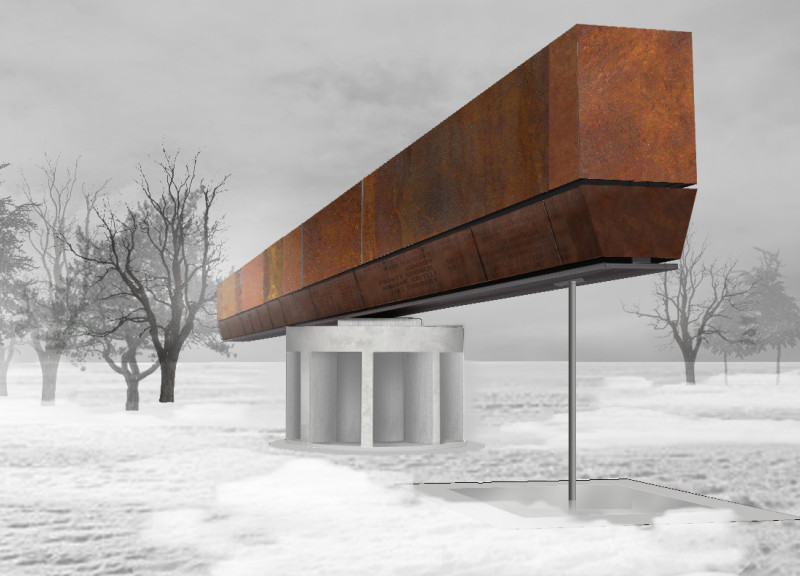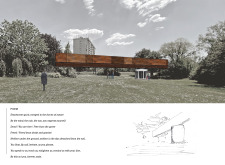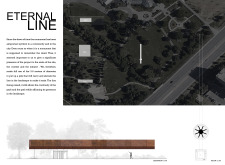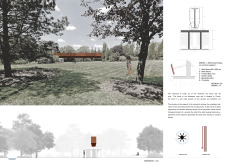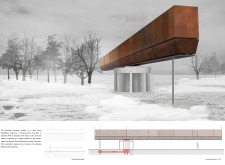5 key facts about this project
Unique Architectural Elements and Symbolism
The design incorporates a cantilevered Corten steel beam that extends 24 meters and achieves a height of 1.5 meters above the ground. This feature invites visitors to experience a dual sense of floating and grounding. The structural stability provided by the central concrete post contrasts the beam’s suspended form, symbolizing the balance between permanence and transience. Corten steel, which develops a patinated surface over time, is used for its weathered aesthetic, bridging the gap between the memorial’s purpose and the surrounding environment.
Further defining the project is its integration of landscaping elements, including native grasses and trees that frame the memorial. This connection to nature fosters a sense of harmony and reinforces the contemplative experience for visitors. The design also includes pathways that weave beneath the beam, allowing free movement while encouraging personal reflection and interaction with the memorial’s structure.
Design Features and Visitor Experience
The architectural plans detail specific inscriptions along the Corten steel surfaces, which convey historical narratives associated with the events and individuals being commemorated. This feature elevates the memorial from a static structure to a dynamic educational platform, prompting dialogue among visitors about the significance of the past.
The spatial dynamics of the memorial emphasize upward movement, guiding the visitor’s gaze towards the raised beam while framing views of the park. This verticality not only adds a dramatic visual quality but also enhances the overall experience, prompting visitors to engage with both the memorial and the natural surroundings.
The "Eternal Line" memorial stands out due to its innovative approach to memorialization within public architecture. By combining functionality with artistic expression, it redefines traditional concepts of remembrance spaces. This project exemplifies a thoughtful consideration of materiality, structural integrity, and user interaction, making it a relevant case study within contemporary architectural discourse.
For a comprehensive understanding of the design, explore the architectural plans and sections to gain deeper insights into the project’s execution and the architectural ideas that informed its development. The detailed presentation will provide further context on the memorial's function and its unique contributions to the realm of architecture.


